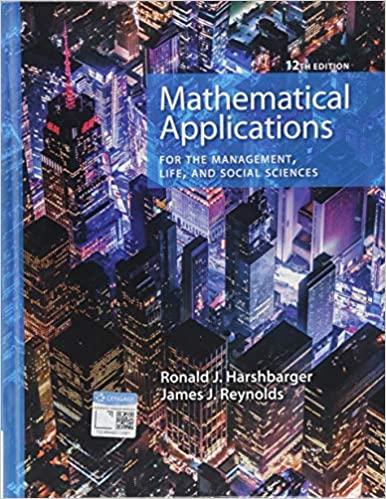Question
A social psychologist that specializes in research on religion sought to test the effectiveness of prayer. More specifically, she wondered if prayer would make any
A social psychologist that specializes in research on religion sought to test the effectiveness of prayer. More specifically, she wondered if prayer would make any difference in the health of medical patients. She selected N=40 participants, half of whom were theists (people who believe in God) and the other half, atheists (people who do not believe in God). The patients were all scheduled to undergo transplant surgery. Starting the day after their surgery, the theist participants were led into prayer every single day while the non-theists patients did not pray.
After 30 days, the health of each patient was then measured on a scale of 1 to 10 using multiple indicators (e.g., complications, blood pressure, red cell count etc.) to see how well they had recovered. Higher scores indicated better recovery and better overall health a month after the surgery.
In variable terms, the researcher would like to know if there are differences in recovery between patients who prayed and those who did not. Is the mean health score different for atheists and theists? The researcher does not believe that there will be a difference.
File titled "SPSS Assignment #2 - Independent Samples T-Test data".
Step 1: Setting up your data
- Input the data into SPSS or Import it using the following steps:
- File
- Import data
- Excel
- "Select file"
- Make sure "Read variable names from first row of data", "Percentage of values that determine data type" and "Ignore hidden rows and columns" options are selected
- Import
- You may notice that your "engagement" variable has too many zeros. To change that, go to variable view and under decimals, change from 15 to 2.
- Label and code your data
patients Width: 8
Decimals: 0
Label: Religious orientation of the patient
Values:
1 Atheists
2 Theists
Missing: None
Columns: 8
Align: Center
Measure: Nominal
Role: None
Health Width: 8
Decimals: 2
Label: Overall health of the patient
Values: None
Missing: None
Columns: 10
Align: Center
Measure: Scale
Role: None
Step 2: Answer the following questions using full sentences
- What are the independent and the dependent variables?
- What are the scales of measurements of the independent and the dependent variable?
- State the null and alternative hypotheses?
- Are the hypotheses directional? What kind of test should we use (one-tailed or two-tailed)?
- Name the three assumptions that must be met for an independent t-test (refer to your textbook pages 310- 316).
- Has the first assumption been met? Why or why not?
- Conduct normality tests. Copy and paste the results of the table titled Tests of normality
- Based on the results of the Shapiro-Wilks test, has the assumption of normality been met? Why or why not?
Step 3: Independent Samples T-Test
- Copy and paste the group statistics table and answer the following questions in full sentences, specify mean and standard deviations
- Which group had better health overall?
- Which group had greater variability?
- Copy and paste the Independent Samples Test table and answer the following questions:
Please note: For the next set of questions, you need to answer in full sentences and report statistics in A P A style.You can report your results using the template below:
"An independent-samples t-test was conducted to compare (your DV) _________ between (IV group / condition 1) ________and (IV group/ condition 2) ________ conditions.There was a significant (or no significant) difference in the scores between IV group 1 (M=___, SD=___) and IV group 2 (M=___, SD=___); t(__)=____, p = ____. The results suggest that [interpret your results using easy-to-understand language]".
For example, if we were reporting data for a study on memory and sugar consumption, we might compose a sentence like this:
"An independent-samples t-test was conducted to compare memory for words in sugar and no sugar conditions. There was a significant difference in the scores for sugar (M=4.2, SD=1.3) and no sugar (M=2.2, SD=0.84) conditions; t(8) = 2.89, p = 0.20. These results suggest that sugar really does have an effect on memory for words. Specifically, our results suggest that when humans consume sugar, their memory for words increases."
- Has the assumption of homogeneity of variances been met? Why or why not?
- Report the results of your Independent Samples t-test (using A P A format) in one paragraph. Make sure to specify (1) your decision and explain it, (2) what the results means (i.e., was the researcher correct in her prediction? Is there a significant difference between the health of the two groups of patients? If yes, which one? Based on the results was prayer effective?), (3) write up A P A style.
Step by Step Solution
There are 3 Steps involved in it
Step: 1

Get Instant Access to Expert-Tailored Solutions
See step-by-step solutions with expert insights and AI powered tools for academic success
Step: 2

Step: 3

Ace Your Homework with AI
Get the answers you need in no time with our AI-driven, step-by-step assistance
Get Started


